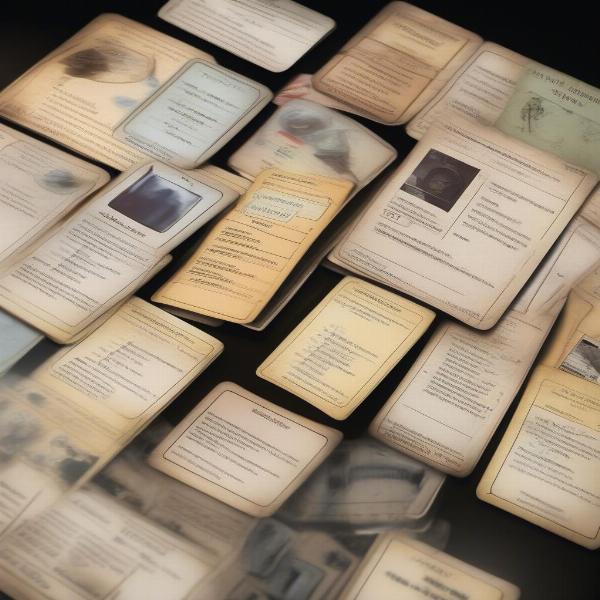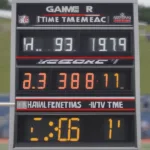Casefile: Truth and Deception is a thrilling social deduction game that puts your investigative skills to the test. In this guide, we’ll cover everything you need to know about how to play Casefile: Truth and Deception, from setting up the game to mastering advanced strategies.
Understanding the Basics of Casefile: Truth and Deception
Casefile is a card-driven game where players take on roles as investigators working together to solve a mysterious case. However, one or more players are secretly the perpetrators, working to deceive the other investigators and escape justice. The investigators must carefully analyze the evidence, interrogate each other, and ultimately decide who is guilty.
Setting Up Your Casefile Game
First, choose a case file. Each case presents a unique narrative and set of clues. Shuffle the role cards and deal one face down to each player. The role cards determine whether a player is an investigator or a perpetrator. Next, shuffle the evidence cards and place them in the center of the table, forming the evidence pile.
Gameplay: Investigating the Truth and Unmasking Deception
The game progresses in rounds. During each round, players take turns performing actions, such as examining evidence cards, interrogating other players, or playing special action cards. Investigators will want to gather clues to identify the perpetrators, while the perpetrators will try to mislead the investigation and sow discord among the investigators.
Interrogation: A Key Element in Casefile: Truth and Deception
Interrogation is a crucial part of the game. When you interrogate another player, you can ask them questions about the evidence or their role. Pay attention to their responses, body language, and any inconsistencies in their story. Remember, the perpetrators are trying to deceive you, so be observant!
Evidence: Piecing Together the Puzzle in Casefile
The evidence cards contain vital clues that can help you solve the case. Some evidence may point directly to the perpetrators, while other evidence might be misleading or irrelevant. It’s up to the investigators to piece together the puzzle and determine the truth.
Advanced Strategies for Casefile: Truth and Deception Gameplay
Once you’ve grasped the basic how to play Casefile: Truth and Deception, you can start incorporating more advanced strategies. Consider these tips to enhance your gameplay:
- Bluffing: Even if you are an investigator, sometimes it’s beneficial to bluff and pretend you know more than you do. This can throw off the perpetrators and make them reveal their own deception.
- Misdirection: Perpetrators can use misdirection to steer the investigation away from themselves. Plant false leads and create doubt among the investigators.
- Teamwork: Investigators need to work together and share information to be effective. Don’t be afraid to discuss your suspicions and theories with other players.
“In Casefile, observation is key. Pay close attention to every detail, no matter how small. It could be the key to cracking the case.” – Dr. Emily Carter, Forensic Psychologist
Case Closed: Determining Guilt or Innocence
After a set number of rounds, the investigators must vote on who they believe is the perpetrator. If they correctly identify all the perpetrators, the investigators win. If even one perpetrator escapes, the perpetrators win.
Variations and Expansions of Casefile
Casefile offers various expansions that introduce new cases, roles, and mechanics. These expansions can add even more depth and replayability to the game, keeping the investigations fresh and exciting.
Why Play Casefile: Truth and Deception?
Casefile is a great game for those who enjoy social deduction, mystery, and teamwork. It’s a game that encourages critical thinking, communication, and strategic gameplay. The immersive narratives and challenging puzzles will keep you engaged from beginning to end.
“Casefile is a game of wits and deception. It’s a battle of minds where you have to constantly question everything you see and hear.” – Detective Michael Davis, NYPD
 Casefile Truth and Deception Evidence Cards
Casefile Truth and Deception Evidence Cards
Playing Casefile: Truth and Deception Solo
While Casefile is designed as a social deduction game, there are ways to adapt it for solo play. You can play against yourself, taking on multiple roles, or use online tools and resources to simulate the experience of playing with others.
Conclusion: Master the Art of Deception in Casefile
Casefile: Truth and Deception offers a captivating blend of mystery, deduction, and social interaction. By understanding the rules, mastering the art of interrogation, and employing strategic thinking, you can become a top-notch investigator and unravel even the most complex cases. Now that you know how to play Casefile: Truth and Deception, gather your friends, choose a case, and prepare for an evening of thrilling investigation and deception!
FAQ
-
How many players can play Casefile? Casefile is typically played with 3-8 players.
-
How long does a game of Casefile take to play? A game of Casefile usually lasts between 60-90 minutes.
-
What age range is Casefile suitable for? Casefile is recommended for ages 14 and up.
-
Are there different levels of difficulty in Casefile? The difficulty of Casefile can vary depending on the chosen case file and the experience of the players.
-
Can I play Casefile online? While there isn’t an official online version of Casefile, there are fan-made adaptations and online communities where you can connect with other players.
-
Where can I buy Casefile: Truth and Deception? Casefile can be purchased from various online retailers and game stores.
-
Are there any expansions or add-ons for Casefile? Yes, there are several expansions available that add new cases and gameplay elements.

